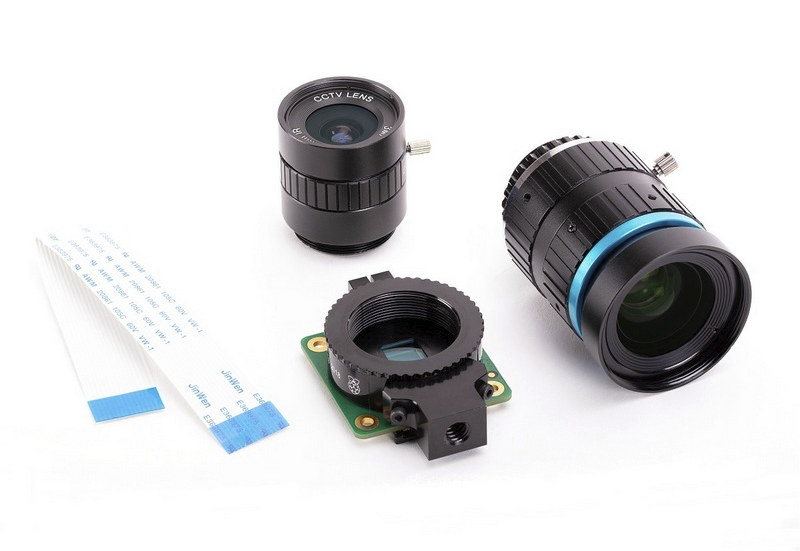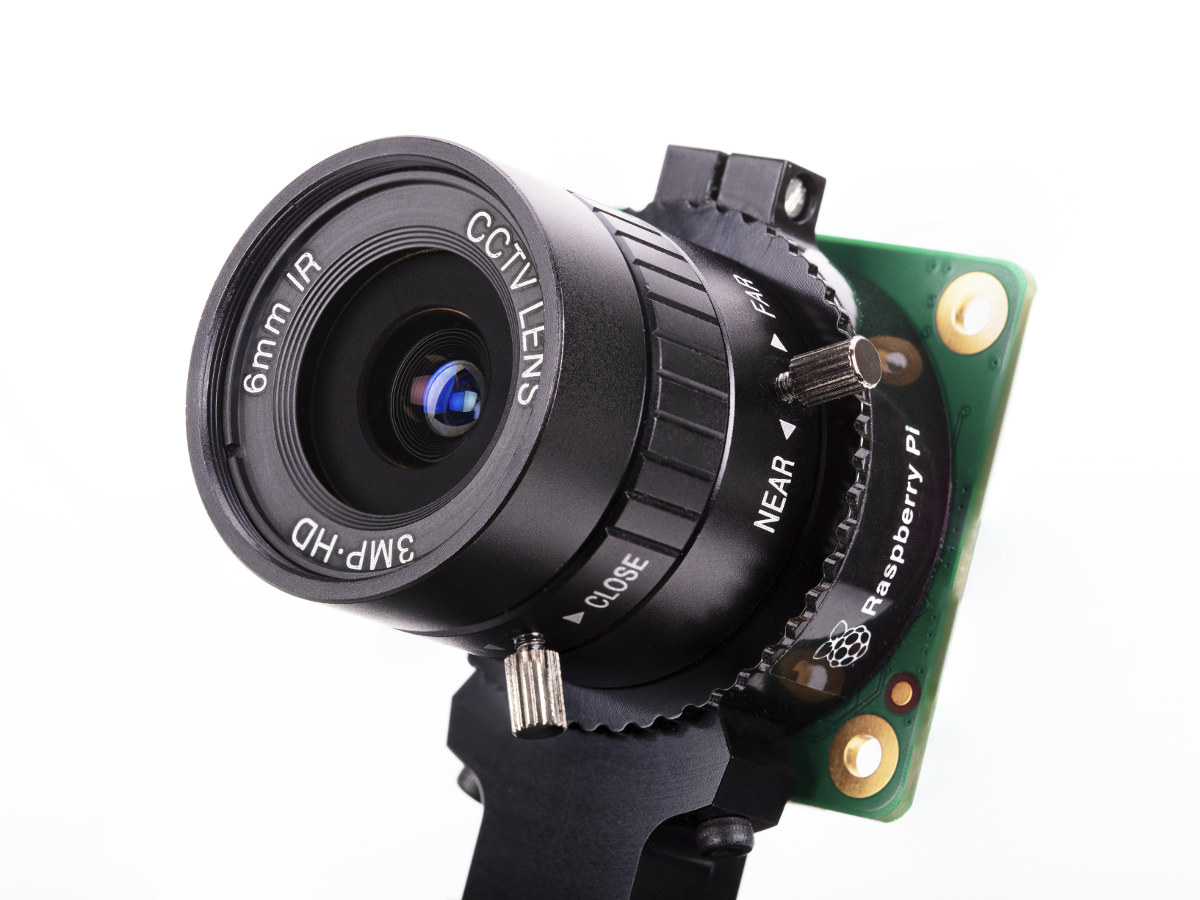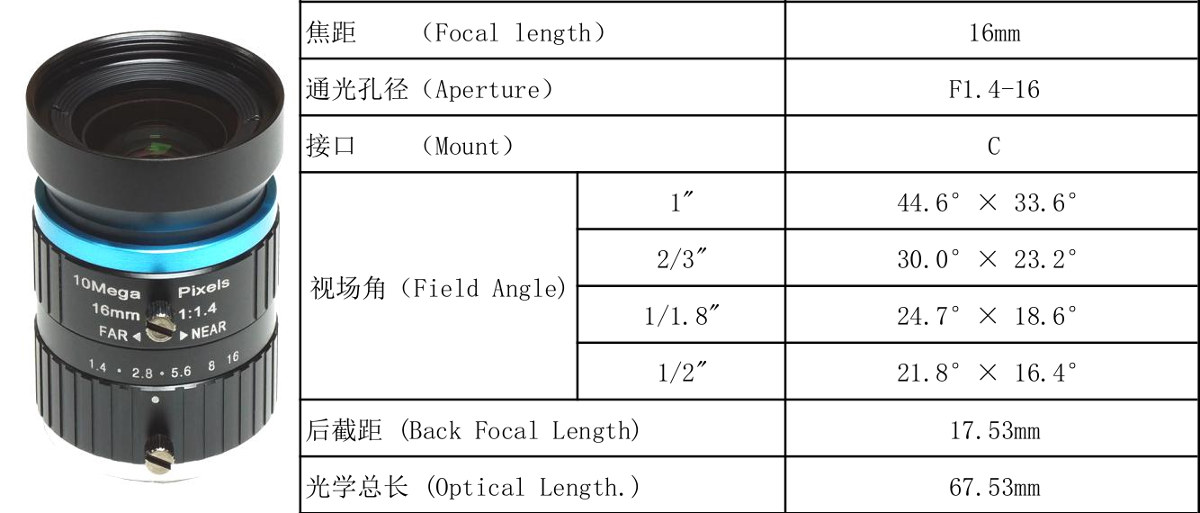The Raspberry Pi Foundation introduced the first official Raspberry Pi camera in May 2013. The $25 camera module came with a 5MP sensor and connected via the board’s MIPI CSI connector. Then in 2016, the company launched version 2 of the camera with an 8MP sensor.
The foundation has now launched a much better camera called Raspberry Pi HQ Camera (High-Quality Camera) with a 12MP sensor, improved sensitivity, and support for interchangeable lenses both in C- and CS-mount form factors.

RPi HQ camera specification:
- Sensor – 12.3MP Sony IMX477R stacked, back-illuminated sensor; 7.9 mm sensor diagonal, 1.55 μm × 1.55 μm pixel size
- Output – RAW12/10/8, COMP8
- Back focus – Adjustable (12.5 mm–22.4 mm)
- Lens standards – C-mount and CS-mount (C-CS adapter included)
- Integrated IR cut filter (can be removed to enable IR sensitivity, but the modification is irreversible)
- 20 cm Ribbon cable
- Tripod mount – 1/4”-20
- Compliance – FCC, EMC-2014/30/EU, RoHS, Directive 2011/65/EU
- Long term availability – In production until at least January 2026
Raspberry Pi HQ camera targets industrial and consumer applications, such as security cameras, requiring high visual fidelity and/or integration with specialist optics, and works with all models of Raspberry Pi using the latest OS.

By default, the module does not ships with any lens so it’s not quite usable as is, so the Raspberry Pi Foundation also offers 6mm and 16mm lenses which should be OEM products.
The CS-mounted 6mm lens (PT361060M) offers 3MP resolution, F1.2 aperture, 63° viewing angle, while the C-mounted 16mm lens (PT3611614M10MP) delivers 10MP resolution, F1.4-16 aperture, and a variety of viewing angles depending on the selected size.

Raspberry Pi HQ camera module is sold for $50, but remember you’ll need to add your own lens, or purchased the official Raspberry Pi 6mm or 16mm lenses for respectively $25 or $50. You’ll find the module and lenses on your usual distributors including Element14, Cytron, Digikey among others.


Jean-Luc started CNX Software in 2010 as a part-time endeavor, before quitting his job as a software engineering manager, and starting to write daily news, and reviews full time later in 2011.
Support CNX Software! Donate via cryptocurrencies, become a Patron on Patreon, or purchase goods on Amazon or Aliexpress




